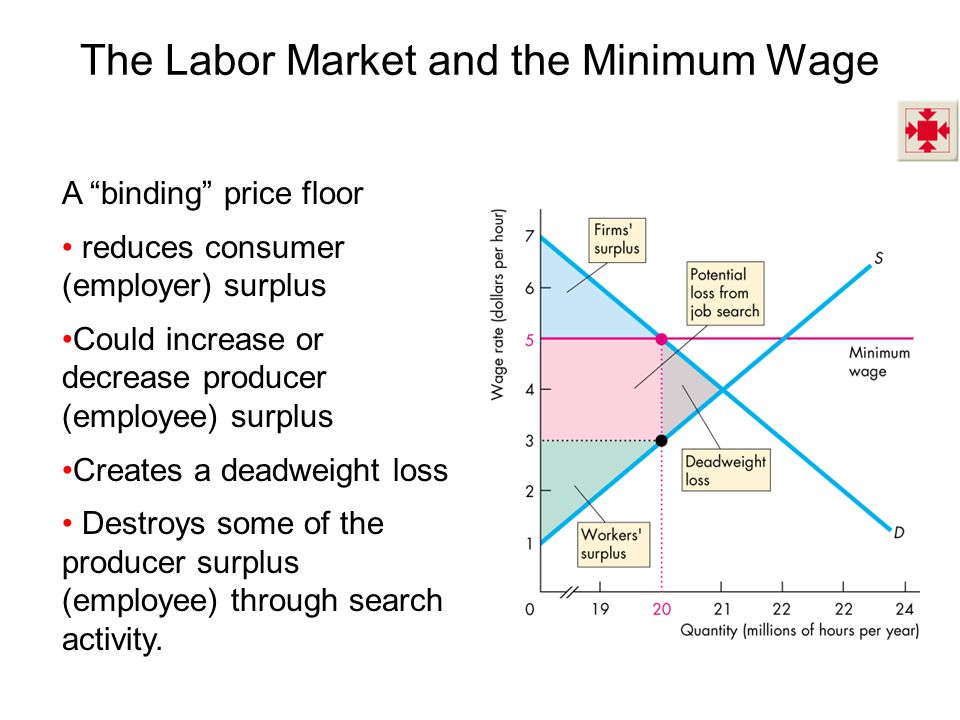Reasons for setting up price floors.
Price floor effect producer surplus.
They may be worse off or no different.
When a price floor is set above the equilibrium price quantity supplied will exceed quantity demanded and excess supply or surpluses will result.
The total economic surplus equals the sum of the consumer and producer surpluses.
So government has to intervene and buy the surplus inventories.
In effect the price floor causes the area h to be transferred from consumer to producer surplus but also causes a deadweight loss of j k.
In the price floor graph below the government establishes the price floor at price pmin which is above the market equilibrium.
But the price floor p f blocks that communication between suppliers and consumers preventing them from responding to the surplus in a mutually appropriate way.
Consumers never gain from the measure.
Producers may be better off no different or worse off as a result of the measure.
This mutual adjustment continues until the price reaches p where producer and consumer decisions are perfectly coordinated.
The deadweight welfare loss is the loss of consumer and producer surplus.
In this case the price floor has a measurable impact on the market.
An effective binding price floor causing a surplus supply exceeds demand.
Suppliers can be worse off.
When price floor is continued for a long time supply surplus is generated in a huge amount.
It ensures prices stay high causing a surplus in the market.
When government laws regulate prices instead of letting market forces determine prices it is known as price control.
Price floors cause a deadweight welfare loss.
A mandated minimum price for a product in a market.
Price helps define consumer surplus but overall surplus is maximized when the price is pareto optimal or at equilibrium.
The result is that the quantity supplied qs far exceeds the quantity demanded qd which leads to a surplus of the product in the market.
Consumer surplus always decreases when a binding price floor is instituted in a market above the equilibrium price.
The effect of a price floor on consumers is more straightforward.
But since it is illegal to do so producers cannot do anything.
A deadweight welfare loss occurs whenever there is a difference between the price the marginal demander is willing to pay and the equilibrium price.
The effect of a price floor on producers is ambiguous.

